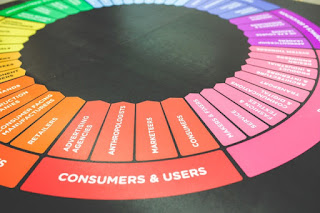While student evaluations or 'happy sheets' become routine in higher education and universities, some question both effectiveness and efficiency in using such instruments to assess quality. Further, what is quality in teaching, learning, assessment, technology, administration and student well-being, then how and when should it be applied?
From the AIM Network Australia:
Mutual Decline: The Failings of Student Evaluation
November 30, 2018 Written by: Dr Binoy Kampmark
'That time of the year. Student evaluations are being gathered by the data crunchers. Participation rates are being noted. Attitudes and responses are mapped. The vulnerable, insecure instructor, fearing an execution squad via email, looks apprehensively at comments in the attached folder that will, in all likelihood, devastate rather than reward. “Too much teaching matter”; “Too heavy in content”; “Too many books.” Then come the other comments from those who seem challenged rather than worn down; excited rather than dulled. These are few and far between: the modern student is estranged from instructor and teaching. Not a brave new world, this, but an ignorant, cowardly one.
The student evaluation, ostensibly designed to gather opinions of students about a taught course, is a surprisingly old device. Some specialists in the field of education, rather bravely, identify instances of this in Antioch during the time of Socrates and instances during the medieval period. But it took modern mass education to transform the exercise into a feast of administrative joy.
Student evaluations, the non-teaching bureaucrat’s response to teaching and learning, create a mutually complicit distortion. A false economy of expectations is generated even as they degrade the institution of learning, which should not be confused with the learning institution. (Institutions actually have no interest, as such, in teaching, merely happy customers.) It turns the student into commodity and paying consumer, units of measurement rather than sentient beings interested in learning. The instructor is also given the impression that these matter, adjusting method, approach and content. Decline is assured…
…Education specialists, administrators and those who staff that fairly meaningless body known as Learning and Teaching, cannot leave the instructing process alone. For them, some form of evaluation exercise must exist to placate the gods of funding and quality assurance pen pushers.
What then, to be done? Geoff Schneider, in a study considering the links between student evaluations, grade inflation and teaching, puts it this way, though he does so with a kind of blinkered optimism. “In order to improve the quality of teaching, it is important for universities to develop a system for evaluating teaching that emphasises (and rewards) the degree of challenge and learning that occurs in courses.” Snow balls suffering an unenviable fate in hell comes to mind.'
Student feedback or evaluations are an essential part of assessing, maintaining and improving quality in education and training. However, much research and expertise is required for such instruments to be used optimally for positive outcomes.
For more articles and blogs about higher education teaching, CPD continuing professional development, enrolled student feedback, evaluation, student satisfaction and university teaching skills, click through.
 |
| Student Experience Feedback (Image copyright Pexels) |
From the AIM Network Australia:
Mutual Decline: The Failings of Student Evaluation
November 30, 2018 Written by: Dr Binoy Kampmark
'That time of the year. Student evaluations are being gathered by the data crunchers. Participation rates are being noted. Attitudes and responses are mapped. The vulnerable, insecure instructor, fearing an execution squad via email, looks apprehensively at comments in the attached folder that will, in all likelihood, devastate rather than reward. “Too much teaching matter”; “Too heavy in content”; “Too many books.” Then come the other comments from those who seem challenged rather than worn down; excited rather than dulled. These are few and far between: the modern student is estranged from instructor and teaching. Not a brave new world, this, but an ignorant, cowardly one.
The student evaluation, ostensibly designed to gather opinions of students about a taught course, is a surprisingly old device. Some specialists in the field of education, rather bravely, identify instances of this in Antioch during the time of Socrates and instances during the medieval period. But it took modern mass education to transform the exercise into a feast of administrative joy.
Student evaluations, the non-teaching bureaucrat’s response to teaching and learning, create a mutually complicit distortion. A false economy of expectations is generated even as they degrade the institution of learning, which should not be confused with the learning institution. (Institutions actually have no interest, as such, in teaching, merely happy customers.) It turns the student into commodity and paying consumer, units of measurement rather than sentient beings interested in learning. The instructor is also given the impression that these matter, adjusting method, approach and content. Decline is assured…
…Education specialists, administrators and those who staff that fairly meaningless body known as Learning and Teaching, cannot leave the instructing process alone. For them, some form of evaluation exercise must exist to placate the gods of funding and quality assurance pen pushers.
What then, to be done? Geoff Schneider, in a study considering the links between student evaluations, grade inflation and teaching, puts it this way, though he does so with a kind of blinkered optimism. “In order to improve the quality of teaching, it is important for universities to develop a system for evaluating teaching that emphasises (and rewards) the degree of challenge and learning that occurs in courses.” Snow balls suffering an unenviable fate in hell comes to mind.'
Student feedback or evaluations are an essential part of assessing, maintaining and improving quality in education and training. However, much research and expertise is required for such instruments to be used optimally for positive outcomes.
For more articles and blogs about higher education teaching, CPD continuing professional development, enrolled student feedback, evaluation, student satisfaction and university teaching skills, click through.













